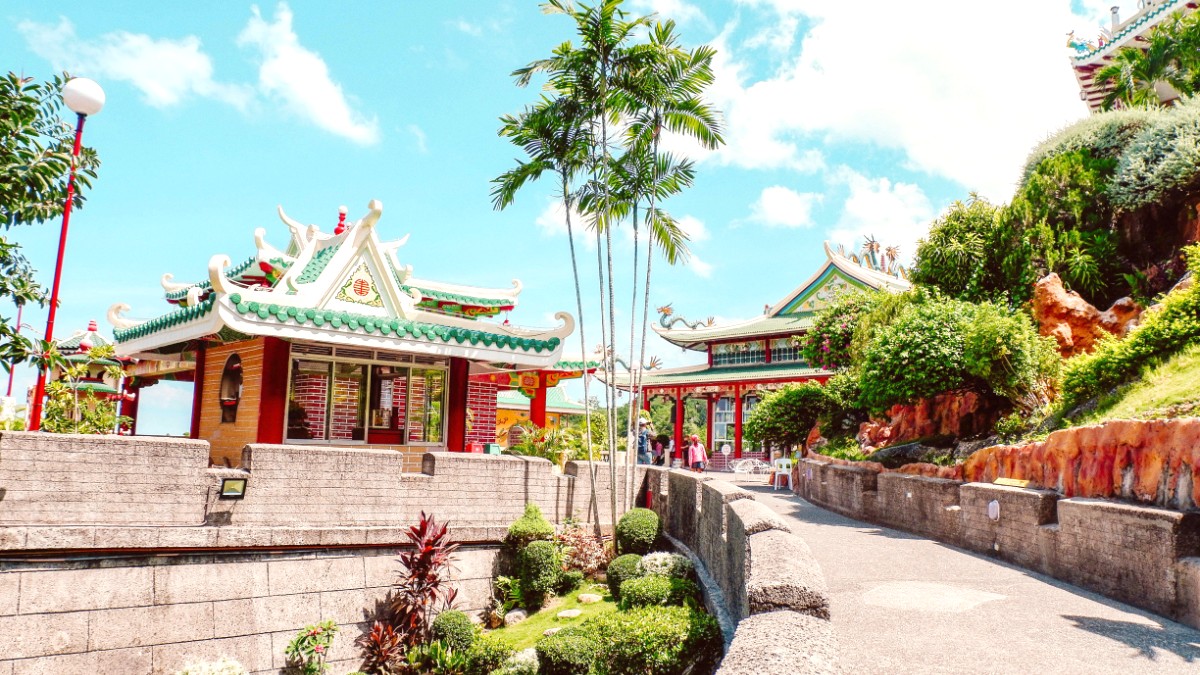
The Visayas, Philippines
Common cooking methods include grilling (sinugba), stewing, and frying. Rice is the main accompaniment to almost every meal, much like bread in Western cultures.
The cuisine celebrates freshness and robust flavors, often with a balance of sourness (from vinegar or citrus) and saltiness.
Cebu's most famous culinary contribution. A whole roasted suckling pig, known for its incredibly crispy skin and flavorful, aromatic meat. Seasoned inside with lemongrass, star anise, garlic, spring onions, it needs no dipping sauce. Many consider it the best lechon in the Philippines.
A famous open-air food court in Cebu City, specializing in grilled meats and seafood. Select raw ingredients, vendors grill them fresh. It offers a lively, authentic dining experience.
Unique to Cebu and parts of the Visayas, rice cooked inside woven palm leaf pouches. This keeps rice moist and compact, easy to hold and eat with grilled foods, without utensils.
Typically eaten from 6:00 AM to 9:00 AM.
A common breakfast includes fried rice (sinangag) with a fried egg (itlog) and a meat dish.
The main meal of the day, usually from 12:00 PM to 2:00 PM.
Many locals eat at "carenderias" or casual restaurants.
A mid-afternoon snack, usually from 3:00 PM to 5:00 PM.
This can include light bites like puto, kakanin, or street food.
Filipino gatherings often involve abundant food and communal dining, especially for birthdays.
Lechon and other specialty dishes are common during town fiestas and national holidays. A festive culinary experience.
Cebu’s culinary landscape has many flavorful dishes. Try these signature items during your visit.
The undisputed king. Whole roasted suckling pig, known for crispy skin and juicy, flavorful meat. Seasoning with lemongrass, star anise, herbs makes it delicious without sauce.
Filipino ceviche. Fresh raw fish (tuna or tanigue) marinated in vinegar, calamansi juice, ginger, onions, chili. Acidity "cooks" the fish.
Spring rolls. Fresh lumpia: sautéed vegetables in soft wrapper, with sweet garlic sauce. Fried lumpia: minced pork/beef with vegetables, deep-fried until crispy.
Rice steamed in woven palm leaf pouches. A companion to grilled street food.
Vendors found near markets and street food areas.
A fertilized duck egg, boiled and eaten from the shell. A local delicacy, an unique experience.
Find vendors in local areas.
Isaw (intestines), Betamax (pork blood), Adidas (chicken feet).
Deep-fried Cebuano spring roll with five-spice, jicama, pork. Served with spicy vinegar.
Communal dipping sauce from pig brains, liver, spices. An adventurous local experience.
Buko Juice, Calamansi Juice, Sago't Gulaman, San Miguel Beer, Tuba.
Famous for American comfort food, especially its large servings of ribs. Multiple branches across Cebu.
An iconic open-air market for grilled Filipino food. A mid-range price point for a full meal. Choose raw ingredients, and they grill them for you.
Carbon Market: Major public market, fresh produce, meats, seafood, dried goods, street food vendors. Sugbo Mercado (IT Park): Popular weekend food market (Thurs-Sun), local and international food stalls, live music, lively atmosphere. A good place to sample different cuisines.
Finding strictly vegetarian or vegan options can be challenging, but it is getting easier. Communicate clearly. Halal options are limited. Kosher options are extremely limited or virtually nonexistent. Achieving a strictly gluten-free meal is challenging due to potential cross-contamination.
An oval-shaped, flaky, crispy biscuit, lightly coated with sugar.
Flower-shaped cookies, crisp and slightly sweet, with a distinct hole in the center.
A popular cold dessert. Shaved ice, evaporated milk, sweet beans, fruits, jellies, sweet potatoes, and flan, often topped with a scoop of ice cream.
Grilled chicken or pork intestines, a popular street food.
Often served with vinegar dip.
Orange-battered deep-fried quail eggs, often with sweet and sour sauce.
A crunchy and savory snack.
Lechon is consumed in large quantities during Sinulog, and street food vendors line parade routes, with a festive culinary experience.
While mainly a religious and cultural festival, food is a major component of the celebration. The streets overflow with food vendors, and restaurants have special promotions.
Some coastal towns may hold local seafood festivals, featuring the day's fresh catch and traditional preparations. Inquire locally for schedules.
When exploring local eateries and street food, prioritize food safety. Consider these points: